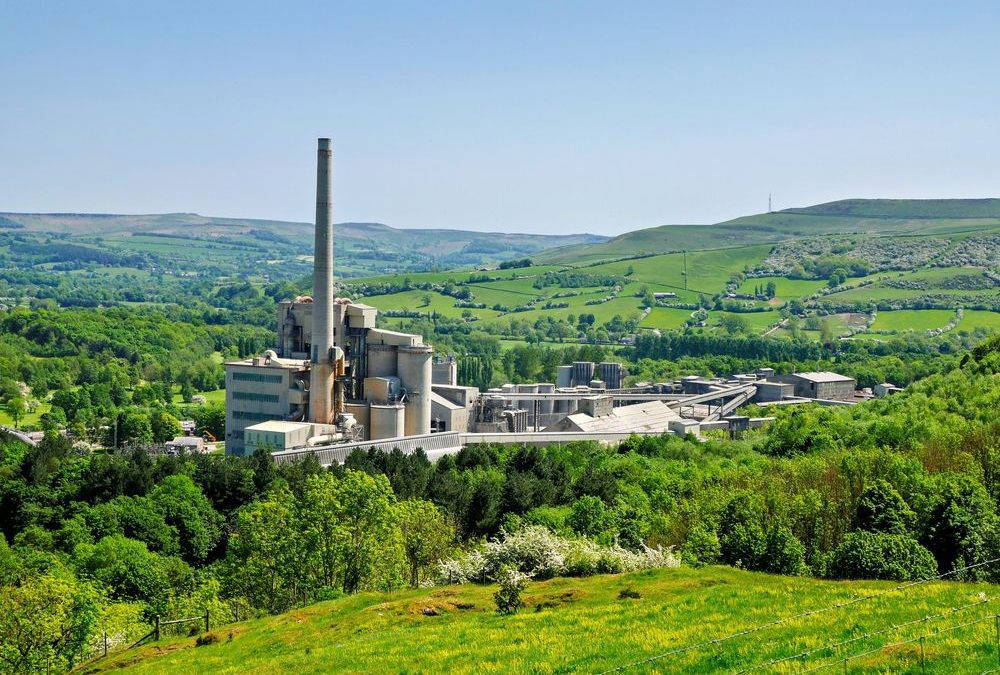Planned shutdowns are a vital part of every cement plant’s calendar. They’re the opportunity to inspect, maintain and upgrade equipment before the next production cycle. Yet every day offline costs money, so efficiency during this period is key. Kingfisher Industrial works with cement producers across the UK to support winter outage projects, providing proven wear protection systems that extend component life and cut maintenance time.
Winter Outage Planning Cement Plants: Below are five areas that deserve close attention during your next planned shutdown.
- Raw Meal Preparation
In cement plants, the primary cause of erosion in raw meal preparation systems is from the conveyance of hard, abrasive raw materials within equipment such as crushers, grinding mills (raw mills), conveyor systems, and ducting, which wear away the unprotected equipment over time.
When equipment fails, it results in product loss, poor heat recovery, and unscheduled downtime.
Incorporating one of Kingfisher’s ceramic, metallic or polymer wear protection lining systems provides reliable wear protection, keeping plant and equipment operational.
- Kiln Firing Fuel Systems
Alternative fuels such as SRF have altered the wear pattern in the SRF conveying pipework. If a cement plant is unable to burn SRF and must revert to burning fossil fuels (the original fuels these systems were designed for), the cost of switching from SRF to fossil fuels can amount to £30-40k per day.
Contaminants in the fuel system will accelerate abrasion and cause failure in the pneumatic system. By installing one of our plant protection systems from our product range, you can ensure your fuel system remains reliable for many years without needing to replace equipment.
- Clinker Handling Systems
Clinker cooling, ducting, transfer chutes, and de-dust cyclones are interconnected components in cement production that facilitate the transfer and cooling of hot clinker from a rotary kiln, recovering heat for the process and managing dust. They handle and move hot clinker, making them prime areas exposed to impact and sliding abrasion.
Material build-up here slows transfer rates and reduces throughput.
Utilising the range of lining systems from Kingfisher Industrial ensures smooth material flow, reduces blockages, which minimises plant failure and extends the service life of equipment.
- Cement Handling Systems
Pneumatic conveying systems, cement mill separators, cyclones and ducting all encounter high-velocity abrasion throughout the transfer system. Kingfisher Industrial’s range of wear-resistant lining systems protects against particle erosion, ensuring the plant remains operational without any unscheduled downtime.
Typical MRO Applications in Cement Production
Kingfisher’s wear protection systems are used across key areas of cement manufacturing, helping maintenance teams reduce downtime and extend equipment life.
Applications include:
- Pneumatic conveying pipework, fans and rotary valves
- Transfer chutes, elevators and conveyor systems
- Cyclones, separators and ducting
- Clinker hoppers, silos and feed bins.
We design, manufacture and refurbish all types of plant and equipment in-house or on-site. We offer a full turnkey service, encompassing design, manufacture, and installation, for wear protection projects.
Our trained engineering teams work within planned shutdown windows, coordinating with site engineers to ensure projects finish on time and equipment is ready for restart.
With over 40 years’ experience across the UK cement sector, we understand the challenges cement plants face on a daily basis.
By acting now, you can ensure your plant runs reliably through 2026 and beyond.
Book a site survey today.📞 01562 543108 | ✉️ Contact the Kingfisher team on 01562 543108 or email enquiries@kingfisher-industrial.com.

